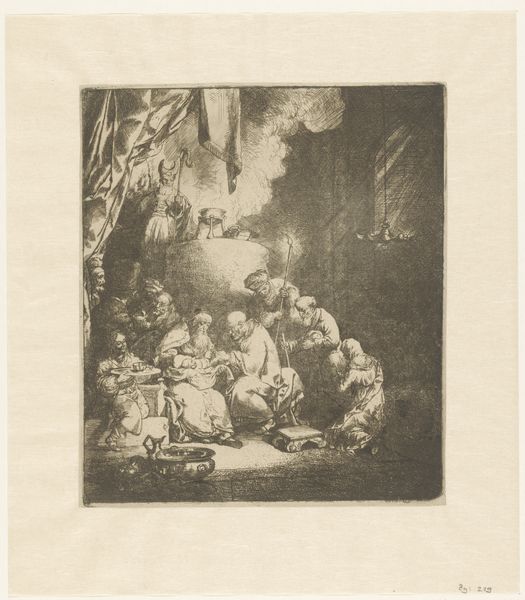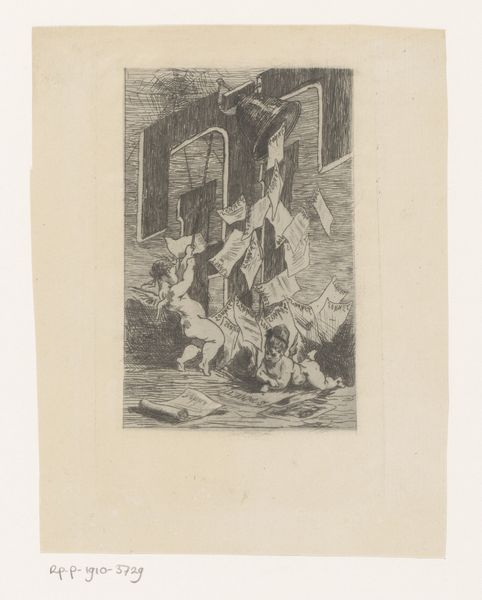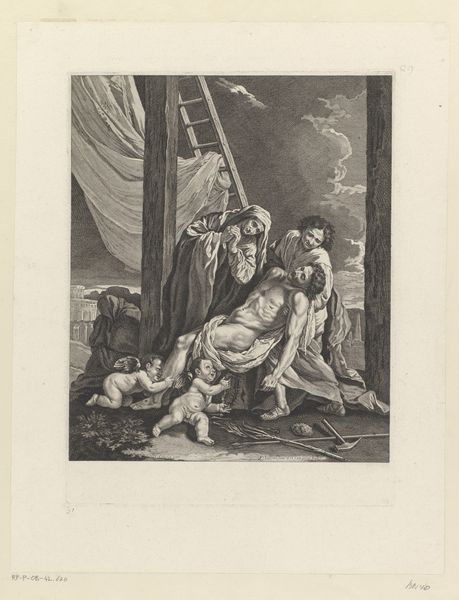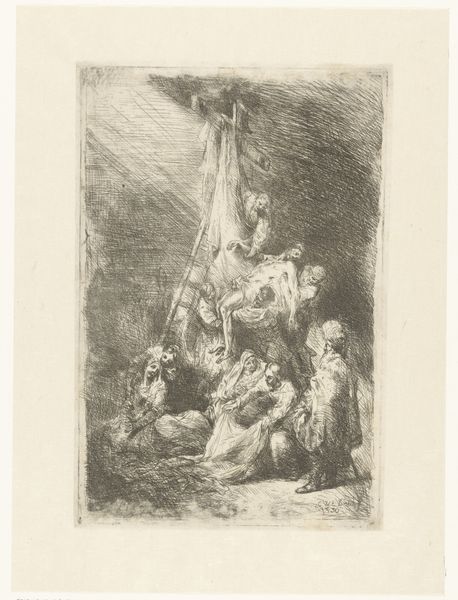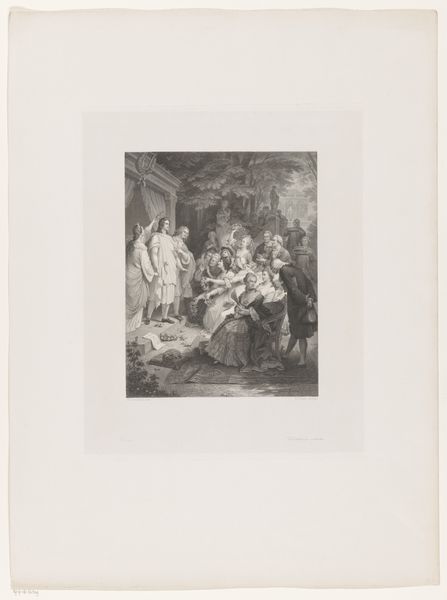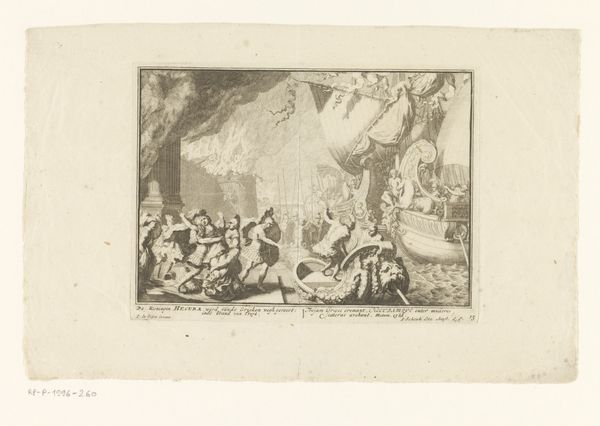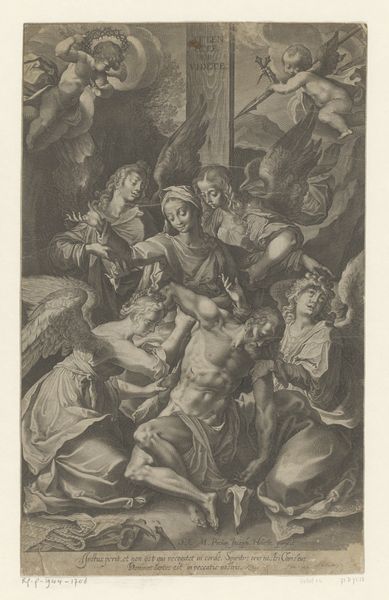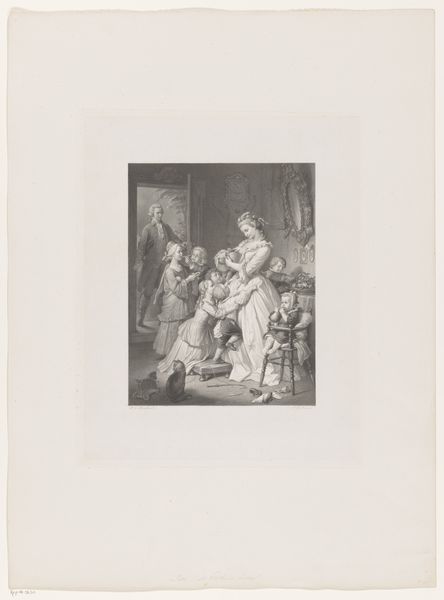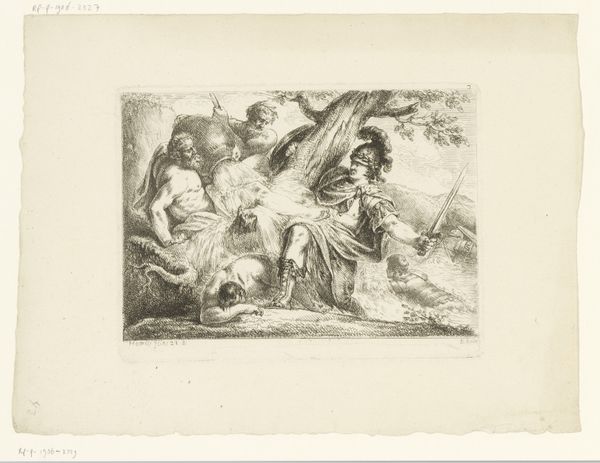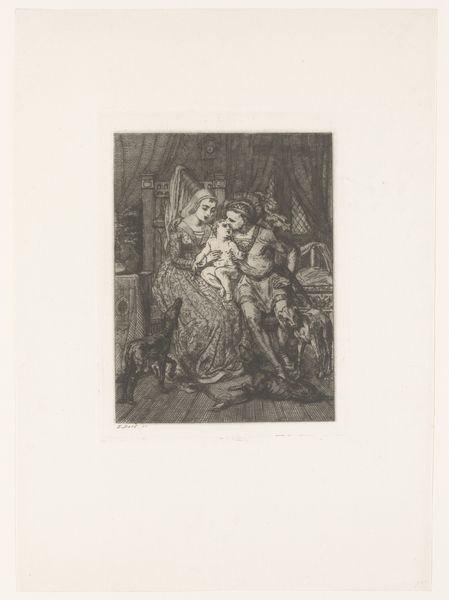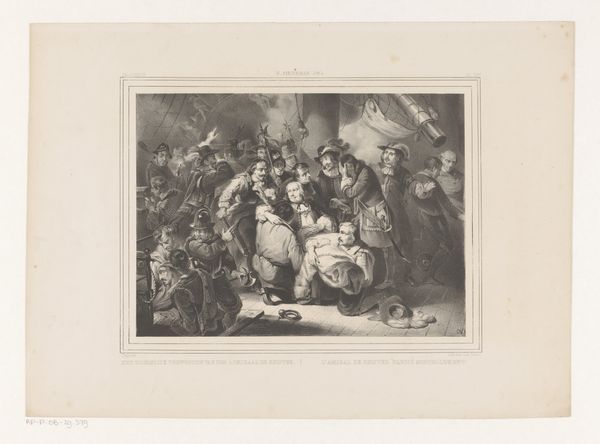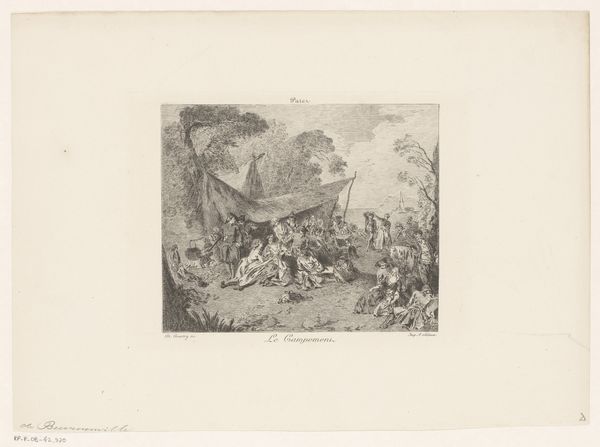
print, etching
#
narrative-art
#
baroque
# print
#
etching
#
old engraving style
#
perspective
#
figuration
#
line
#
history-painting
Dimensions: height 191 mm, width 150 mm
Copyright: Rijks Museum: Open Domain
Curator: What a remarkable find in the Rijksmuseum collection. This is a print titled "Cyllenie en Lépante herkennen elkaar op een boot" by Abraham Bosse, dating back to 1639. Editor: It has a somber, almost clandestine feel. The stark contrast between light and shadow and that packed arrangement of figures… Curator: It's quintessential Baroque. Bosse was masterful at employing dramatic lighting to heighten the narrative and evoke strong emotional responses, after all. Observe how that torch strategically illuminates the figures. Editor: And all achieved through the medium of etching, incredibly! It makes you wonder about the artist’s painstaking labour to achieve such delicate lines. What story is Bosse telling here? Curator: The title reveals quite a lot actually! Cyllenie and Lépante— they are allegorical figures who symbolize, respectively, France and Venice, recognizing each other aboard a ship. It is about an alliance! This recognition acts as a profound symbol of shared identity, highlighting diplomacy. Editor: So it’s essentially a piece of propaganda, thinly veiled behind classicism. Who was his intended audience? I wonder about the access, and affordability of this piece… Etchings could be reproduced… Curator: Exactly. Bosse cleverly deploys well-known mythic figures to reinforce ideals of statecraft for the politically engaged audience, perhaps as diplomatic gifts. These would spread and take on a life of their own, far removed from the elite. Editor: Knowing about the printmaking process and material considerations definitely enriches how we interpret this artwork. Curator: Yes. Symbols, context, the hand that created the piece -- it's all intertwined, layers upon layers. We see cultural continuity through a carefully constructed historical moment. Editor: And considering the cost of the paper itself, its distribution channels and its cultural circulation we grasp at this object's power.
Comments
No comments
Be the first to comment and join the conversation on the ultimate creative platform.
